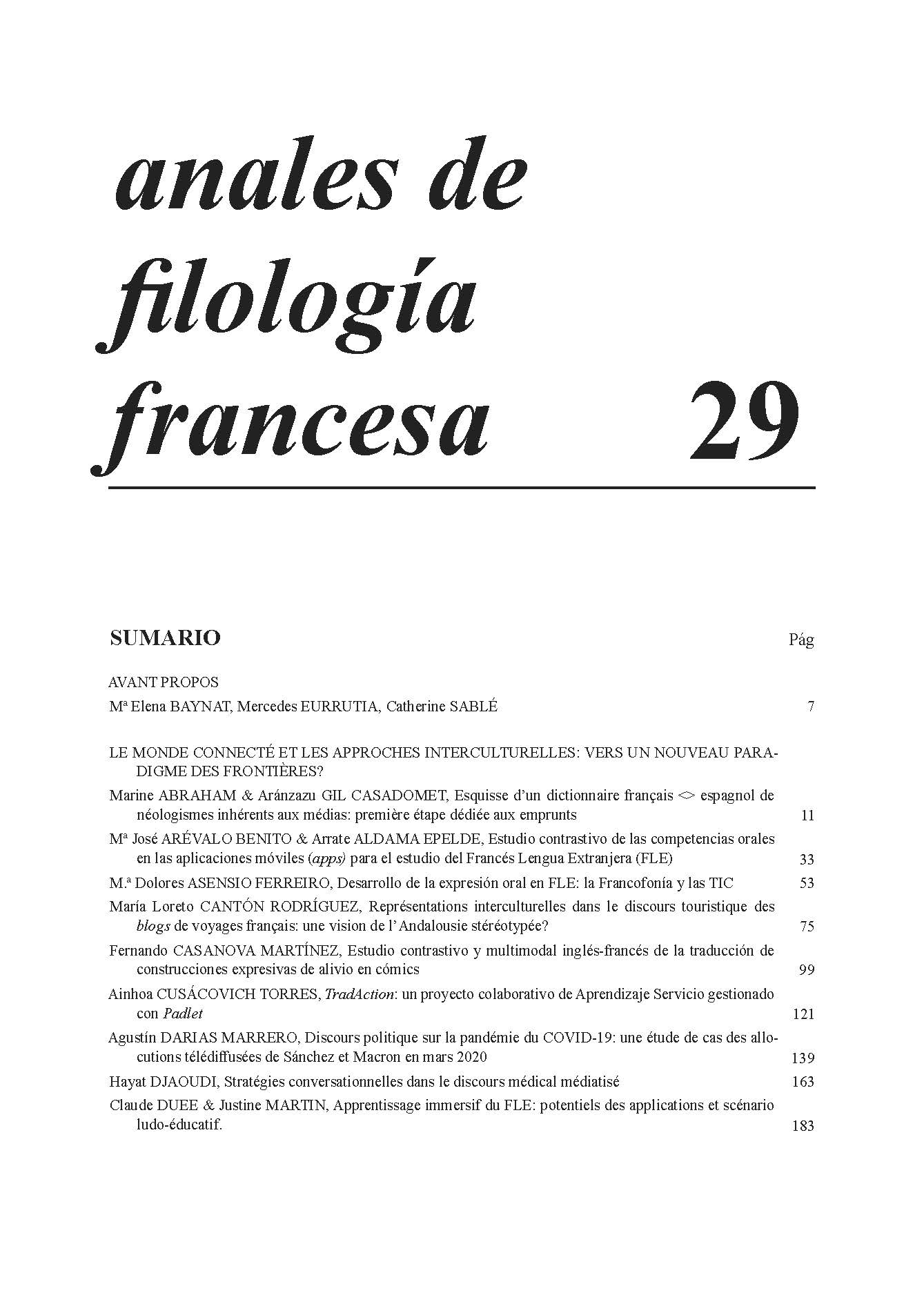The creation of non-linear digital stories as an intercultural tool in the field of French philology
Supporting Agencies
- Universidad de Valencia
Abstract
This article focuses on the importance of gamification as a form of innovative teaching method in French Philology for our digital native students. The creation of serious games can encourage them, generating active participation and better academic results. In the context of TICE class in the UV LML Degree, we did workshops during the last two years for the creation of interactive fictions based on hypertexts with a tool called Twine. We are going to analyze the amazing results and give some didactic examples to implement this tool in the university classroom.
Downloads
-
Abstract431
-
PDF (Español (España))750
References
CARRERAS, Carla. 2017. ʺDel homo ludens a la gamificaciónʺ in Quaderns de
filosofia i ciència, nº4(1), 107-118.
CONSEJO DE EUROPA. 2002. Marco Común Europeo de Referencia para las lenguas: aprendizaje, enseñanza, evaluación. Instituto Cervantes y Anaya : <https://cvc.cervantes.es/ensenanza/biblioteca_ele/marco/cvc_mer.pdf> [08/05/2021].
CONTRERAS ESPINOSA, Ruth. 2016. ʺJuegos digitales y gamificación aplicados en el ámbito de la educaciónʺ in Revista Iberoamericana de Educación a Distancia, nº19 (2), 27-33: <https://bit.ly/2Ib8HFW> [04/05/2021].
DEL-MORAL, Mª Esther, Lourdes VILLALUSTRE & María del Rosario NEIRA. 2016. ʺRelatos digitales: activando las competencias comunicativa, narrativa y digital en la formación inicial del profesoradoʺ in Ocnos, nº15(1), 22-41: <https://core.ac.uk/download/pdf/77077486.pdf> [30/04/2021].
FERNÁNDEZ, Tania .2017. Serious game: una metodología innovadora para la docencia de enfermería. Trabajo de Fin de Grado. Universidad de Navarra:<https://academica-e.unavarra.es/xmlui/handle/2454/26853> [08/05/2021].
HUIZINGA, Johan. 1967 [1938]. Homo ludens. Milano, Giulio Einaudi.
KAAP, Karl M. 2012. The Gamification of Learning and Instruction: Game-based Methods and Strategies for Training and Education. San Francisco, Pfeiffer.
LABRANDE, Hugo. ʺRacontons une histoire ensemble : histoire et caractéristiques de la fiction interactive francophoneʺ: <http://hlabrande.fr/if/historyfrenchif/#part8> [10/05/2021].
LA FONTAINE, Jean de. 2002. Fables. Paris, Le livre de poche.
CONSEJO DE EUROPA. 2002. Marco común europeo de referencia para las lenguas: aprendizaje, enseñanza, evaluación. Instituto Cervantes y Anaya : <https://cvc.cervantes.es/ensenanza/biblioteca_ele/marco/cvc_mer.pdf> [08/05/2021].
MONTFORT, Nick. 2003. ʺToward a theory of Interactive fictionʺ: <https://nickm.com/if/toward.html#sec2> [15/04/2021].
MONTGOMERY, Raymond Almiran & Paul GRANGER. 1983. Las joyas perdidas de Nabooti. Elige tu propia aventura nº2. Barcelona, Timus Mas.
PAJARES TOSKA, Susana. 1997. ʺLas posibilidades de la narrativa intertextualʺ in ESPÉCULO. Revista de Estudios Literarios, 6: <http://www.ucm.es/OTROS/especulo/numero6/s_pajare.htm> [20/04/2021].
RODRÍGUEZ, Fernando y Raúl SANTIAGO. 2015. Gamificación: Como motivar a tu
alumnado y mejorar el clima en el aula. Innovación Educativa. Madrid, Digital-Text. Grupo Océano: <https://bit.ly/2js8uQG> [25/04/2021].
RYAN, Marie-Laure. 2005. ʺPeeling the Onion: Layers of Interactivity in Digital Textʺ in Interactivity of Digital Texts Conference, mayo, Münster: <http://www.marilaur.info/onion.htm> [08/05/2021].
VÁZQUEZ HERRERO, Jorge. 2019. Narrativas digitales de no ficción interactiva. Tesis doctoral, Universidad de Santiago de Compostela: <https://minerva.usc.es/xmlui/bitstream/handle/10347/20674/rep_1987.pdf?sequence=1&isAllowed=y> [29/04/2021].
Las obras que se publican en esta revista están sujetas a los siguientes términos:
1. El Servicio de Publicaciones de la Universidad de Murcia (la editorial) conserva los derechos patrimoniales (copyright) de las obras publicadas, y favorece y permite la reutilización de las mismas bajo la licencia de uso indicada en el punto 2.
2. Las obras se publican en la edición electrónica de la revista bajo una licencia Creative Commons Reconocimiento-NoComercial-SinObraDerivada 3.0 España (texto legal). Se pueden copiar, usar, difundir, transmitir y exponer públicamente, siempre que: i) se cite la autoría y la fuente original de su publicación (revista, editorial y URL de la obra); ii) no se usen para fines comerciales; iii) se mencione la existencia y especificaciones de esta licencia de uso.
3. Condiciones de auto-archivo. Se permite y se anima a los autores a difundir electrónicamente las versiones pre-print (versión antes de ser evaluada) y/o post-print (versión evaluada y aceptada para su publicación) de sus obras antes de su publicación, ya que favorece su circulación y difusión más temprana y con ello un posible aumento en su citación y alcance entre la comunidad académica. Color RoMEO: verde.










